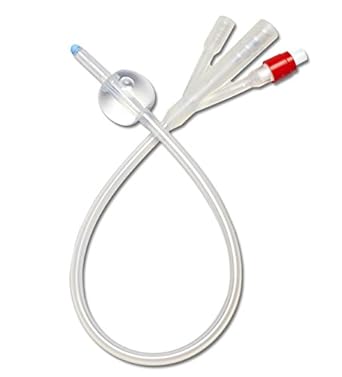Catheterization is a common medical procedure used for various reasons, including urinary retention, monitoring of urinary output, and facilitating surgical procedures. One of the key challenges associated with catheterization is ensuring the secure placement of catheters to minimize complications such as infection, dislodgment, and patient discomfort. Innovations in Foley stat locks have emerged as a promising solution to these challenges, enhancing the security and efficacy of catheterization. This article explores the latest advancements in Foley stat locks, their benefits, and their future in the medical field.
Understanding Foley Catheters and Stat Locks

A Foley catheter is a flexible tube that is inserted into the bladder to drain urine. It is widely used in hospitals and healthcare settings for patients who are unable to urinate independently. The catheter is held in place by a balloon that is inflated once the catheter is correctly positioned in the bladder. However, maintaining secure placement is crucial to avoid complications.
Stat locks are devices designed to secure catheters, preventing them from becoming dislodged or causing discomfort to the patient. Traditionally, these devices have been made from adhesive materials or straps that attach to the skin. Recent innovations in Foley stat locks have focused on improving their design, functionality, and patient experience.
Key Innovations in Foley Stat Locks
The healthcare industry is witnessing several innovative advancements in Foley stat locks, aimed at improving patient safety and comfort. Some of the key innovations include:
- Enhanced Adhesive Technologies: New adhesive materials are being developed to provide strong, reliable fixation without causing skin irritation. These innovations allow for secure attachment even in the presence of moisture.
- Adjustable Designs: Modern Foley stat locks feature adjustable mechanisms that allow healthcare providers to customize the fit according to the patient’s anatomy, ensuring optimal comfort and security.
- Integrated Monitoring Systems: Some innovative Foley stat locks are equipped with sensors that monitor catheter position and alert healthcare providers in case of dislodgment or issues, enhancing patient safety.
- Antimicrobial Coatings: To reduce the risk of catheter-associated urinary tract infections (CAUTIs), new stat locks are being developed with antimicrobial properties that inhibit bacterial growth.
- Patient-Centric Designs: Innovations are also focusing on the overall experience of the patient, incorporating features that enhance comfort and ease of use, such as softer materials and intuitive attachment methods.
Case Studies and Real-World Applications

Several healthcare institutions have begun to implement innovative Foley stat locks, leading to improved patient outcomes and reduced complications. A few notable case studies include:
1. University of California, San Francisco (UCSF)

UCSF introduced an adjustable Foley stat lock in their surgical wards, resulting in a significant decrease in catheter dislodgment rates. The adjustable fit allowed healthcare providers to tailor the locks to each patient’s anatomy, which contributed to increased patient satisfaction and comfort.
2. Mayo Clinic

At Mayo Clinic, the use of antimicrobial-coated Foley stat locks led to a 40% reduction in CAUTI rates over a six-month period. By integrating these innovative locks into their catheterization protocols, the clinic not only enhanced patient safety but also reduced the economic burden associated with treating CAUTIs.
3. Johns Hopkins Hospital

Johns Hopkins Hospital implemented a monitoring system integrated with their Foley stat locks, which alerted nursing staff when a catheter was at risk of dislodgment. This proactive approach reduced the frequency of catheter-related complications and improved overall patient outcomes.
The Impact of Innovations on Patient Safety and Comfort
Innovations in Foley stat locks have profound implications for patient safety and comfort. Some of the key benefits include:
- Reduced Risk of Infections: Antimicrobial coatings and improved hygiene practices associated with modern stat locks significantly lower the incidence of CAUTIs.
- Improved Comfort: Adjustable designs and soft materials enhance the patient experience, allowing for greater mobility and comfort during recovery.
- Decreased Complications: Enhanced security reduces dislodgment rates, leading to fewer complications and the need for additional procedures.
- Increased Compliance: When patients experience less discomfort and reduced risk of complications, they are more likely to comply with catheterization protocols.
Future Directions in Foley Stat Lock Technology

The future of Foley stat locks looks promising, with ongoing research and development aimed at further enhancing their efficacy and usability. Potential future innovations may include:
- Smart Technology Integration: The integration of IoT sensors could lead to real-time monitoring of catheter conditions, providing alerts and data analytics for healthcare providers.
- Biodegradable Materials: The development of eco-friendly, biodegradable materials for Foley stat locks could minimize environmental impact while ensuring patient safety.
- Customization through 3D Printing: 3D printing technology may allow for the customized manufacturing of Foley stat locks tailored to individual patient needs and anatomical variations.
- Artificial Intelligence in Usage Monitoring: AI-driven analytics could provide insights into catheter usage patterns, helping healthcare providers optimize catheterization protocols and improve patient outcomes.
Innovations in Foley stat locks represent a significant advancement in the field of secure catheterization. By addressing the common challenges associated with catheter placement and care, these innovations are enhancing patient safety, comfort, and overall healthcare outcomes. As technology continues to evolve, we can expect further advancements that will refine and redefine the standards of catheterization practices. Healthcare providers, patients, and industry stakeholders must remain informed and engaged with these developments to fully harness the potential of Foley stat locks in improving healthcare delivery. The future of secure catheterization is bright, promising a safer and more comfortable experience for patients worldwide.